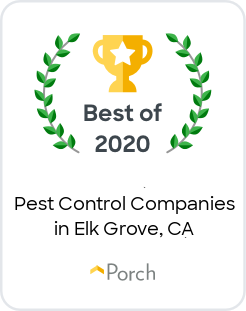Preventing pests from coming into your Fresno, CA house begins with good outside preventative care. Preventing pest entrance by controlling invading outside pests before they enter a structure is the most effective strategy to decrease pest intrusion. The second step is to block any possible entrance points, such as holes in external walls, gaps beneath doors, and screens for windows and vents. Taking these steps can assist cut down on the time it takes to investigate and locate a pest’s entrance site, as well as the amount of pesticide needed to remedy your problem.
What does a pest need to survive?
Moisture: Water loss via the exoskeleton is a concern for almost all bugs. As a result, many are found in high-humidity locations near buildings. Pests can be found dwelling under mulched shrubbery and plant beds, beneath decks and porches, and among dense ground cover like ivy to maintain correct moisture levels.
Food: Invading pests, both immature and adult, feed largely on decaying organic debris, fungus, and bacteria found in high-moisture environments.
Others are hunter-gatherers who will congregate in the same places as their prey.
Periods of activity for many pests are most active between dusk and dawn because the relative humidity in the air is at its peak, which helps them save water. During the day, ants that feed on plant recreations or honeydew are busy. At night, ground beetles and moths are generally drawn to lights.
What the homeowner should do
The importance of exclusion and moisture control cannot be overstated.
The goal is to eliminate pest-friendly circumstances, create a hostile or dry environment immediately surrounding the building, diminish other elements that attract pests to the structure, and physically restrict insect access.
- Lawn- Keep the grass trimmed and the buildup of thatch to a minimum.
- Mulch- It’s preferable if this is kept to a thin layer (2 inches or less) and that cypress or other decay-resistant mulch is utilized.
-
- To lessen insect pressure, leave a 12-18′′ space between the mulch and the foundation, with a rock barrier in between.
- Leaves and other debris- To avoid a buildup and a desirable living habitat, all rubbish surrounding the base of the structure should be eliminated.
- Firewood should be stored 10 feet or more away from the structure, with the top of the stack covered.
- Next to the building, create a hostile or arid atmosphere.
- Grade of lot- To transfer rain away from the foundation, the earth should drop or decrease from the foundation wall.
- Vegetation gap- Allow at least one foot of space between the foundation and the plant to allow air to flow and moisture to escape. This gap should be at least 18 inches wide and surfaced with gravel, blacktop, or cement for commercial structures. This air gap will also help the stonework and any siding last longer.
- Trees and shrubs– It’s preferable if there are spaces between the trees and plants so that sunlight may reach the ground. Furthermore, no tree branches should overhang the structure. Insects and rodents utilize them as a shortcut to reach the roofs of buildings.
Proactive physical prevention
- Doors should be tightly-closed so that no light escapes to the outside.
- Wherever possible, doors with self-closing systems should be installed, especially if screen doors are present.
- If windows may be opened, they should be well-fitting and properly screened.
- Caulk should be applied to all door and window frames.
- All holes in the outer walls should be filled with caulk.
- Fascia boards and siding should be tightly connected or caulked.
- Screen the vents in the attic and soffit.
Recognize that there are several things that can and should be done to minimize the attraction of the region surrounding a facility to pests and prevent their invasion, as listed above. Call Official Pest Prevention for help identifying and selecting which of the above factors are most critical to resolving your pest control issue. We can also assist you with developing an action plan for your pest control requirements and continuing management alternatives.



